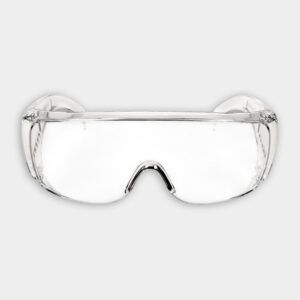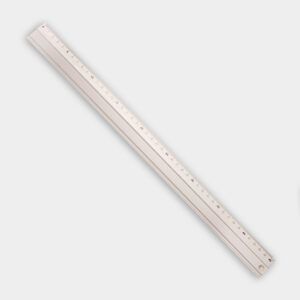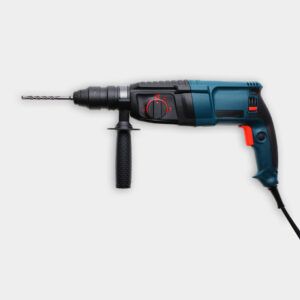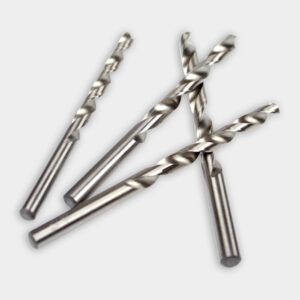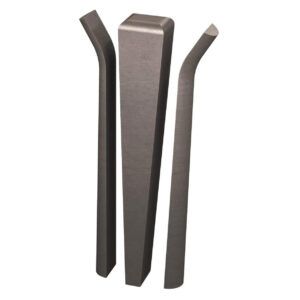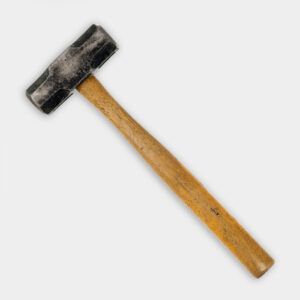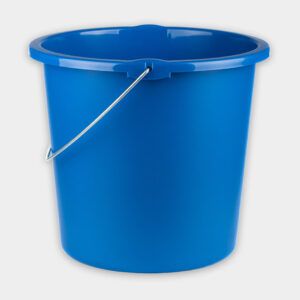We may be compensated if you purchase through links on our website. Our team is committed to delivering honest, objective, and independent reviews on home products and services.
A stone water fountain could add a peaceful touch to your outdoor space, and you can tackle this DIY project all on your own. This fountain style brings together the natural look of stone and the relaxing sound of water, turning any garden or patio into a tranquil spot. In the video above, landscape contractor Jenn Nawada and mason Mark McCullough walk you through the process of building a stone water fountain using materials you can find at most hardware stores. Let’s dig a little deeper below.
Choosing the Right Stone for Your Water Fountain
Picking the right stone plays a big role in how your fountain looks. Here are a few things to keep in mind when selecting a stone:
- Size: Choose a stone that’s large enough to make a statement but not so big that it overwhelms your space. A good rule of thumb is to keep the size in proportion with your garden or patio.
- Shape: Look for a stone with an interesting shape that will create a nice flow of water. Irregular shapes often add character to the fountain.
- Color: Pick a stone that works with your existing landscaping. Darker stones tend to hide watermarks better than lighter ones.
McCullough recommends using a large boulder that can be split. The cracked surface provides a stable base for the fountain and helps the stone blend naturally into the surroundings.
Gathering Materials and Tools to Build the Fountain
Before you start, gather all the materials and tools you’ll need. Having everything on hand makes the project go smoothly.
- 250 GPH fountain pump
- Accessory rocks for decoration
- Bucket for water or debris
- Dust mask
- Fountain basin with lid
- Large boulder or rock
- Old nail or screw for marking
- Rotary hammer drill
- Safety glasses
- Small sledgehammer
- Stone drill bits
- Stone splitting feathers
- Straight edge
Preparing the Stone for a Water Fountain
To create a stable base for your fountain, you’ll need to split the stone. Follow these steps:
- Mark a straight line across the stone’s surface using an old nail or screw and a straight edge.
- Put on safety glasses and a dust mask.
- Using a rotary hammer drill in hammer drill mode, drill a series of 3–4 holes along the marked line, each about 3–4 inches deep.
- Insert stone-splitting feathers into each hole.
- Use a sledgehammer to drive the feathers into the stone, alternating strikes until the stone splits in half.
Nawada demonstrates this technique under McCullough’s guidance, showcasing the importance of proper safety equipment and technique.
Creating the Fountain Water Flow
Once you’ve split the stone, you’ll need to create a path for the water to flow. Here’s how:
- Place the cut side of the stone facing down to create a stable base for your fountain.
- Using the rotary hammer drill, create a hole large enough to accommodate the fountain pump’s discharge pipe.
- Make sure the hole is drilled straight up and down for optimal water flow to prevent leaks and enhance the fountain’s operation.
The natural topography of your chosen stone will influence the water flow, lending a unique charm to your fountain’s appearance.
Setting Up the Fountain Basin
The fountain basin is the heart of your water feature. Follow these steps to set it up:
- Place the fountain basin in your desired location—check that it’s level and stable to support the stone’s weight.
- Fill the basin with water.
- Install the pump inside the basin and route the discharge pipe through the basin lid.
- Check that the power cord exits the basin through the small recess in the lid to prevent pinching.
Assembling the Fountain
Now, it’s time to bring all the elements together. Test the fountain by plugging it in and waiting for water to bubble out of the discharge pipe. This check confirms the system’s functionality before final assembly.
Carefully lift the stone and place it over the discharge pipe, routing the pipe through the hole you drilled. Lower the stone onto the basin lid slowly, adjusting its position as needed. Fill the rest of the basin lid with river rocks, beach stones, or other decorative pebbles. This not only secures the setup but also enhances its visual appeal.
For a natural look, Nawada suggests allowing some stones to overflow the rim of the lid slightly, as long as it doesn’t affect the water flow.
Maintaining Your Stone Water Fountain
To keep your fountain looking and functioning at its best, follow these maintenance tips:
- Regularly clean the basin and pump to prevent algae growth. This maintains clean, clear, and healthy water levels.
- Check the water level frequently—especially during hot weather—and refill as needed.
- In winter, either drain the fountain or use a fountain heater to prevent freezing. This precaution safeguards the pump and stone from freeze-related damage.
Enhancing Your Fountain’s Surroundings
To create a cohesive look, consider these landscaping ideas:
- Plant water-loving plants around the base of the fountain. Species like ferns and hostas thrive in the moist environment near water features, adding lush, vibrant greenery.
- Add lighting to highlight the fountain at night. Strategically placed lights accentuate the flowing water, creating a captivating nighttime display.
- Create a seating area nearby to enjoy the soothing sound of flowing water. Position benches or chairs to provide a comfortable resting spot, allowing you to relax and appreciate your garden’s ambiance.
These enhancements can transform your outdoor area into a space you’ll love.
Resources
Jenn and Mark team up to design and create a water feature out of a boulder. Jenn and Mark work together to split the boulder, sourced from Mark’s personal collection, in half using the feather and wedge technique. Using a Bosch masonry drill, they drill a series of holes across the center of the boulder.
The fountain is powered by an MD Tidalwave MD-Series Pump manufactured by Atlantic Water Gardens.
Pondmaster Adjustable Bell Fountain Kit was provided by Pondmaster Store.
The accessory rocks were supplied by Miami Beach Pebbles, Inc Decorative Stones.
